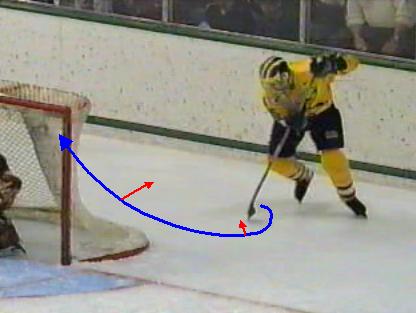So why doesn't the puck fall off the
stick during this trick? To explain this you can think of a
skateboarder going through a loop d loop or swinging a bucket over your
head when you have water in it. In order for the move to work the
player must move the puck along the trajectory at a high enough
velocity
to generate a high enough centripetal acceleration , to create enough
contact force between puck and blade. ac = v2/R
R= the radius of curvature
along the trajectory
The puck won’t slip off the blade as long as gravity is overcome by a
large enough acceleration produced by the player, the puck must always
be accelerating. If the motion stops, the puck falls down.
The blade of the stick must be positioned in the same way as the red
arrows shown in the picture for this move to work.
If you are still confused by what actually happens in this move, click
the link below to watch the video of the move
http://www.youtube.com/watch?v=HWBYcugv11s
Skating
Calculating Slap
shot Speed
Slap Shot Home

